Always read and follow the manual to ensure safe assembly and operation. Never touch hot surfaces or grill parts during use. Regularly check for gas leaks and secure connections. Properly preheat and monitor temperature for optimal grilling. Keep the grill clean and store it safely after use. Follow all warnings to prevent injury or damage. Use appropriate tools and accessories for maintenance. Ensure the grill is used outdoors‚ away from flammable materials. Refer to the manual for specific guidelines and troubleshooting tips to maintain performance and safety. Always prioritize food safety and proper shutdown procedures. Regularly inspect burners and ignition systems for optimal function. Keep the grill well-ventilated and avoid overloading it. Use grill brushes and tools correctly to maintain cleanliness. Never leave the grill unattended while in operation. Ensure all parts are cool before cleaning or storing. Follow local regulations and safety standards for gas grills. Always keep the manual handy for quick reference. Regularly check fuel levels and replace tanks safely. Use compatible accessories to avoid damage. Keep children and pets away from the grill while in use. Never modify the grill without professional guidance. Always follow the manufacturer’s instructions for seasoning and maintenance. Use protective gear when handling hot or sharp components. Ensure proper ventilation to avoid gas buildup. Never use the grill near open flames or sparks. Always prioritize safe handling of propane and gas connections. Regularly inspect hoses and connections for signs of wear. Follow proper procedures for igniting and shutting down the grill. Never store flammable materials near the grill. Keep emergency contact information nearby. Always follow local fire safety guidelines. Use the grill on stable‚ heat-resistant surfaces. Never grill in enclosed spaces or under combustible structures. Regularly clean grease traps and drip pans to prevent fires. Follow proper food handling practices to avoid contamination. Always use food-safe utensils and plates. Keep a fire extinguisher nearby while grilling. Never overload the grill with too much food. Use tongs and spatulas safely to avoid accidents. Always follow the recommended cooking temperatures for different foods. Use a meat thermometer to ensure food is cooked safely. Never leave cooking food unattended. Always keep a phone nearby in case of emergencies. Follow proper first aid procedures for burns. Regularly inspect the grill for damage or wear. Use replacement parts only from authorized dealers. Follow proper disposal methods for used parts and materials. Always recycle materials when possible. Keep the grill manual in an accessible location. Regularly review safety guidelines to stay informed. Use the grill responsibly and with caution at all times.
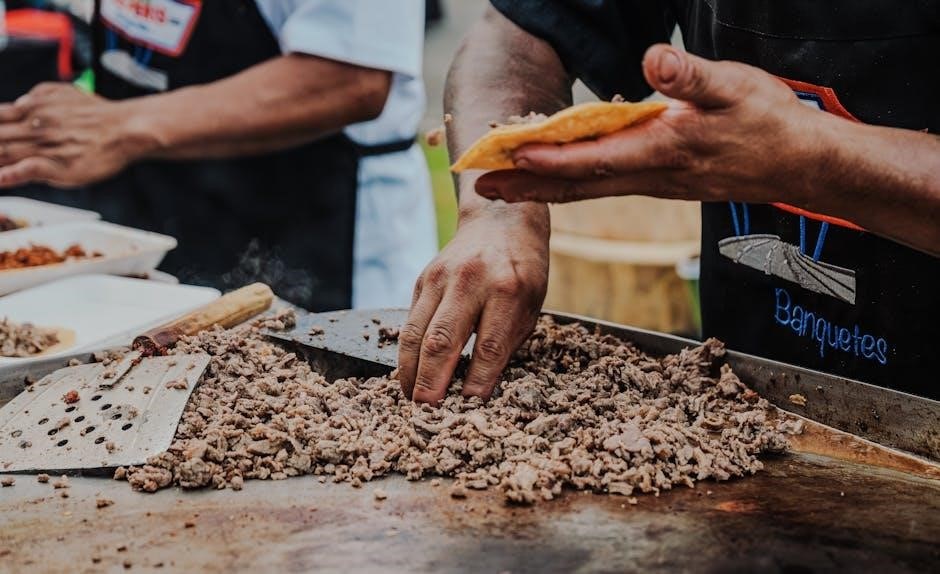
Safety Precautions
Always read and follow the manual thoroughly before assembling or using the grill. Never touch cooking surfaces‚ housing‚ or other hot parts during operation or until cooled. Ensure the grill is installed outdoors‚ away from combustible materials like ceilings or overhangs. Avoid using the grill indoors or in enclosed spaces. Keep the manual handy for future reference and ensure all users understand the safety guidelines. Regularly inspect the regulator hose‚ valve connections‚ and burner for leaks or damage. Secure all connections tightly to prevent gas leaks‚ which can lead to fires or explosions. Never ignore warnings or cautions in the manual‚ as failure to comply may result in serious injury or property damage. Keep children and pets away from the grill while in use. Always ensure proper ventilation to prevent gas buildup. In case of an emergency‚ have a fire extinguisher nearby and know how to use it. Never attempt to modify the grill or use unauthorized parts‚ as this can void safety certifications. Always follow local fire safety regulations and manufacturer guidelines to ensure safe grilling experiences.
Assembly and Preparation
Begin by carefully unpacking the grill and ensuring all components are included. Refer to the manual for a detailed parts list and assembly guide. Follow the step-by-step instructions to avoid errors. Use the provided tools or recommended ones for a secure fit. Place the grill on a stable‚ flat surface away from flammable materials. Attach the legs‚ wheels‚ and other hardware as instructed. Connect the burners‚ drip pans‚ and grates‚ ensuring they are properly aligned and secured. Tighten all bolts and screws firmly to prevent loose parts. If you notice any damaged or missing components‚ contact customer support immediately. Once assembled‚ inspect the grill for any signs of wear or improper connections. Ensure the gas hose and regulator are securely attached to both the grill and the propane tank. Double-check all connections for leaks using a soap solution or leak detector. After assembly‚ clean all surfaces with a mild detergent and rinse thoroughly. Allow the grill to dry completely before first use. Proper assembly and preparation are crucial for safe and efficient grilling.
Preheating the Grill
Preheating your grill is essential for achieving even cooking results and preventing food from sticking to the grates. Start by closing the grill lid and setting the burner to the highest heat setting. Allow the grill to preheat for 10-15 minutes‚ or until the temperature gauge indicates the desired temperature. During this time‚ the grill surfaces will reach optimal heat for searing. Once preheated‚ use a grill brush to clean the grates and remove any residue. This ensures a clean cooking surface and prevents food from sticking. For gas grills‚ preheating also helps burn off any manufacturing residues if it’s a new grill. Always use a meat thermometer to verify internal temperatures for safety and doneness. Proper preheating ensures consistent cooking performance and enhances the flavor of your food. Avoid opening the lid too frequently during preheating‚ as this can lower the temperature and extend the process. Once ready‚ adjust the burners to your desired settings for cooking. Preheating is a crucial step that sets the foundation for a successful grilling experience.
Temperature Control
Temperature control is crucial for achieving perfectly cooked food on your grill. Always use the temperature gauge to monitor the grill’s internal temperature. To adjust the heat‚ use the burner knobs‚ turning them clockwise or counterclockwise to increase or decrease the flame. For gas grills‚ preheating the grill to the desired temperature before cooking ensures even heat distribution. Once preheated‚ you can adjust the burners to maintain consistent temperatures. Use the lid to regulate heat retention—closing it for higher temperatures and opening it slightly to lower the heat. Avoid sudden temperature changes‚ as this can affect cooking performance. Always keep the grill vents clean to ensure proper airflow‚ which is essential for maintaining accurate temperatures. Regularly check the propane level to prevent unexpected temperature drops during cooking. If you notice uneven heating‚ rotate the food or adjust the burners to compensate. Proper temperature control prevents undercooked or overcooked food and ensures a safe grilling experience. Always refer to the manual for specific temperature recommendations for your grill model.

Cooking Techniques
Mastering cooking techniques is essential for achieving delicious results on your grill. Always preheat the grill to the recommended temperature before cooking to ensure even heat distribution. Use direct heat for searing steaks‚ burgers‚ and vegetables‚ while indirect heat is ideal for slow-cooking meats like brisket or ribs. Place food in the center of the grill for direct heat and move it to the sides for indirect cooking. Keep the lid closed during cooking to retain heat and promote even cooking. Flip food gently using tongs or spatulas to avoid piercing and losing juices. Avoid overcrowding the grill‚ as this can lower the temperature and affect cooking quality. Use a meat thermometer to check internal temperatures and ensure food safety. For vegetables‚ brush them with oil and season before grilling to enhance flavor. Clean the grates with a grill brush before cooking to prevent sticking. Rotate food halfway through cooking for even browning. Allow meat to rest for a few minutes after grilling to let juices redistribute. Experiment with marinades and rubs to add flavor. Always follow food safety guidelines to prevent undercooked or overcooked dishes. Proper cooking techniques ensure a perfect grilling experience every time.
Maintenance and Cleaning
Regular maintenance and cleaning are crucial for extending the life of your grill and ensuring optimal performance. After each use‚ clean the grates with a sturdy grill brush to remove food residue. Wipe down the burners and drip pans with a mixture of soap and water to prevent grease buildup. Use a damp cloth to clean the exterior surfaces‚ avoiding harsh chemicals that could damage the finish. For tougher stains‚ apply a grill cleaner and let it sit before scrubbing. Deep clean the grill periodically by removing all components and soaking them in warm soapy water. Replace worn-out parts‚ such as heat deflectors or flame tamers‚ to maintain even heat distribution. Clean the grease trap regularly to prevent flare-ups and fires. Store the grill in a dry‚ protected area during off-season to prevent rust. Always unplug or turn off the gas supply before cleaning. Use protective gloves and eyewear when handling sharp or hot components. Regular maintenance ensures your grill remains in excellent condition for years of reliable use. Keep the grill clean to promote food safety and prevent the buildup of harmful bacteria. Avoid using abrasive cleaners that could scratch the surfaces. Instead‚ opt for gentle yet effective cleaning products. By following these maintenance and cleaning tips‚ you can keep your grill functioning like new and enjoy consistent grilling results.
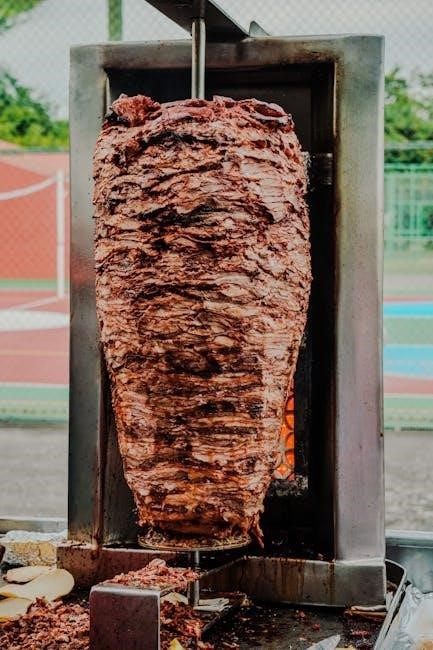
Troubleshooting Common Issues
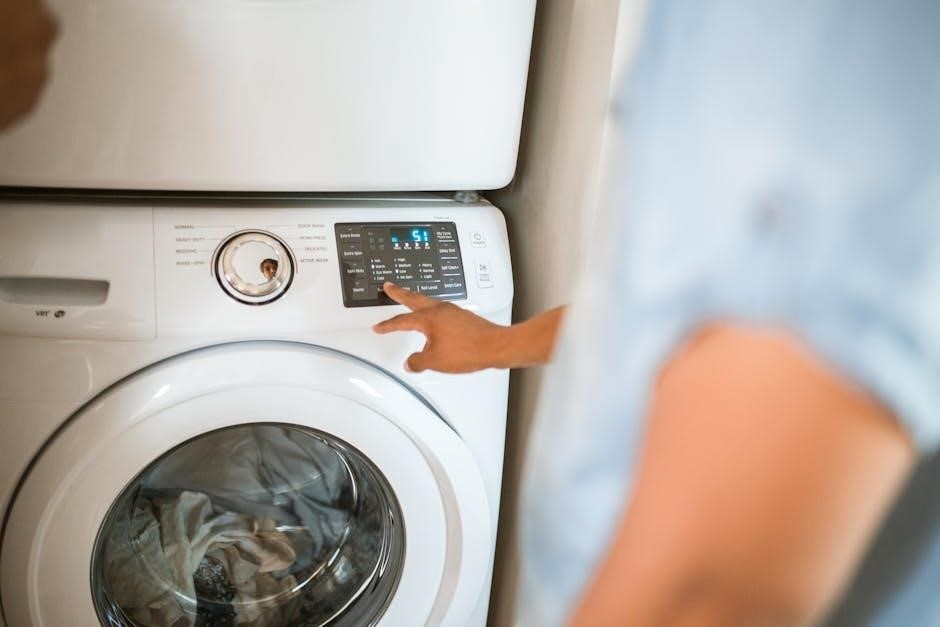
Troubleshooting common grill issues can help ensure safe and efficient operation. If the grill fails to ignite‚ check the propane tank for sufficient fuel and ensure the regulator and hose connections are secure. Clean the igniter and burner holes to remove debris. For uneven heating‚ inspect heat deflectors and flame tamers for proper alignment and cleanliness. If the grill is not holding temperature‚ adjust the burner settings and ensure the lid is sealed tightly. Grease buildup can cause flare-ups‚ so regularly clean the drip pan and grease trap. If the burners are corroded‚ replace them to maintain proper gas flow. Always refer to the manual for specific troubleshooting steps. If issues persist‚ contact a professional for assistance. Regular maintenance can prevent many common problems. Keep the grill clean and well-maintained to ensure optimal performance. Addressing issues promptly can extend the grill’s lifespan and enhance your grilling experience. Always prioritize safety when troubleshooting to avoid accidents or further damage.
Handling Propane and Gas Safety
Proper handling of propane and gas is critical for safe grilling. Always store propane tanks upright in a well-ventilated area‚ away from direct sunlight and heat sources. Ensure the tank is turned off when not in use. Before connecting the regulator‚ check for leaks by applying soapy water to the hose and connections—bubbles indicate a leak. Never use an open flame to check for leaks. Securely fasten all gas connections to prevent loose fittings‚ which can lead to gas escape. If you smell gas‚ immediately turn off the supply and do not ignite the grill until the leak is fixed. Keep propane tanks away from children and pets. Always follow the manufacturer’s guidelines for propane tank replacement and disposal. Never store propane tanks indoors or in enclosed spaces. Use only approved gas hoses and connectors to ensure safety. Regularly inspect the propane system for signs of wear or damage. If unsure about any aspect of propane handling‚ consult a professional. Always prioritize gas safety to prevent accidents and ensure a secure grilling environment.
Understanding Grill Components
Understanding the components of your grill is essential for proper operation and maintenance. The burners are the heart of the grill‚ responsible for generating heat. They are typically made of materials like stainless steel or cast iron for durability. Heat deflectors‚ also known as flavorizer bars‚ are positioned above the burners to distribute heat evenly and prevent flare-ups. The grates‚ where food is placed‚ can be made of cast iron‚ stainless steel‚ or porcelain-coated materials for optimal heat retention and easy cleaning.
The drip tray or grease pan collects food drippings to prevent flare-ups and make cleanup easier. Vents or chimneys are used to regulate airflow‚ which helps control temperature and smoke levels. The ignition system‚ whether electronic or manual‚ is used to light the burners safely. Propane tanks store the fuel for gas grills and must be handled with care. Finally‚ wheels or handles provide portability‚ making it easy to move the grill as needed.
Familiarizing yourself with these components ensures you can use your grill effectively and perform routine maintenance to extend its lifespan.
Seasoning the Grill
Seasoning your grill is a crucial step to ensure non-stick performance‚ prevent rust‚ and enhance flavor. Start by cleaning the grates and interior with a stiff brush to remove any debris. Next‚ apply a thin‚ even layer of cooking oil to the grates using a paper towel or brush. For gas grills‚ turn the burners to medium-high heat and let the grill run for 30 minutes to allow the oil to bond with the metal. For charcoal grills‚ light the coals and heat the grill to the same temperature. After heating‚ turn off the grill and let it cool slightly before wiping off excess oil with a paper towel. Repeat this process 2-3 times to build a durable seasoning layer. Avoid using cooking sprays‚ as they can leave residue. Proper seasoning ensures your grill performs optimally and maintains its condition over time. Regular re-seasoning is recommended‚ especially after deep cleanings or extended storage.
Storing the Grill
Proper storage of your grill is essential to maintain its condition and longevity. Before storing‚ ensure the grill is clean and free of food residue to prevent pests and rust. For gas grills‚ turn off the propane tank and secure it tightly. If storing for an extended period‚ consider disconnecting the tank and storing it separately in a well-ventilated area. Cover the grill with a durable‚ waterproof cover to protect it from dust‚ moisture‚ and UV damage. Avoid storing the grill in damp or humid environments‚ as this can lead to rust. For charcoal grills‚ remove all ashes and ensure the grill is completely cool before covering. Store the grill in a dry‚ elevated area to prevent water pooling. If storing indoors‚ place it in a garage or shed away from flammable materials. Regularly inspect the grill during storage to ensure no damage or pests. Proper storage will keep your grill in great shape for the next cooking season.
Leak Checks and Gas Connections
Performing regular leak checks and ensuring secure gas connections are critical for safe and efficient grilling. Start by inspecting all gas hoses and connections for visible damage‚ cracks‚ or wear. Use a soap solution to detect leaks: apply the solution to the connections and hoses‚ then turn on the gas. Bubbles forming indicate a leak‚ which must be addressed immediately. Tighten all connections firmly‚ but avoid overtightening‚ as this can damage the threads. If a leak persists‚ replace the faulty component. Always use the correct type of gas hose and ensure it is rated for high pressure. When connecting the propane tank‚ make sure the valve is fully closed before attaching the hose. After connecting‚ open the tank valve slowly and check for leaks again. Store the propane tank upright in a well-ventilated area‚ never inside or near open flames. Regularly inspect the regulator and gas lines for blockages or kinks. Always follow the manufacturer’s instructions for gas connections and leak detection to ensure safety and optimal performance.
Ignition and Lighting Procedures
Proper ignition and lighting procedures are essential for safe and effective grilling. Begin by ensuring the propane tank valve is fully closed before starting the ignition process. Locate the ignition knob‚ typically found on the control panel‚ and turn it to the “light” position. Press the igniter button firmly until you hear a clicking sound and see the burner ignite. If the burner does not light immediately‚ wait a few seconds and try again. Never lean over the grill while attempting to light it‚ as this can be dangerous. For grills with multiple burners‚ repeat the process for each one‚ ensuring they light evenly. If your grill does not have an electronic igniter‚ use a long match or lighter to manually light the burner. Always light the burner with the knob in the “on” position to avoid gas buildup. After lighting‚ adjust the burners to your desired temperature. If the flame appears uneven or yellow‚ turn off the burner and check for blockages in the vents or burners before relighting. Proper ignition ensures a safe and efficient grilling experience. Always follow these steps carefully to avoid accidents.
Adjusting Burner Settings
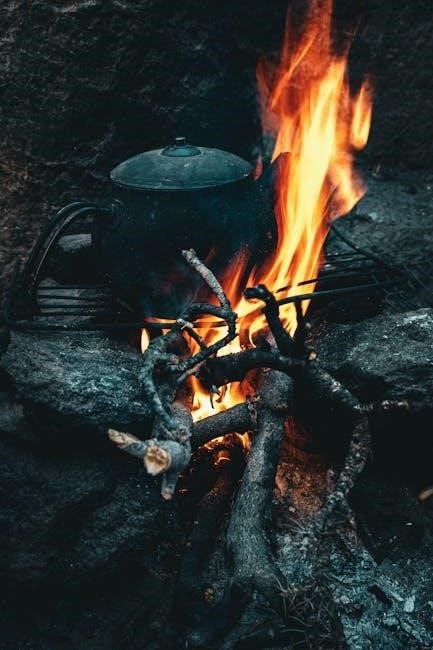
Adjusting burner settings is crucial for achieving the perfect cooking temperature and ensuring even heat distribution. Start by turning the control knobs gradually to your desired setting‚ either low‚ medium‚ or high. For gas grills‚ the knobs typically control the flow of propane to the burners. If your grill has multiple burners‚ you can adjust them independently to create different heat zones. This is ideal for cooking various foods simultaneously‚ such as searing steak on high heat and simmering vegetables on low. Always monitor the temperature gauge to ensure the grill stays within your target range. For precise control‚ make small adjustments and allow the grill to stabilize before making further changes. Avoid sudden drastic changes‚ as this can cause temperature fluctuations. If your grill has a vent system‚ use it to regulate airflow and maintain consistent heat. Proper burner adjustment ensures efficient cooking and prevents overheating or underheating. By mastering this technique‚ you can achieve professional-grade results every time you grill. This step is essential for both novice and experienced grillers alike.
Monitoring Fuel Levels
Monitoring fuel levels is essential for ensuring uninterrupted grilling sessions and maintaining safety. For propane grills‚ check the fuel gauge regularly to track the remaining propane in the tank; Most propane tanks come equipped with a built-in gauge or can be fitted with an external one for accurate readings. Always keep a spare tank on hand to avoid running out of fuel mid-cook. If your grill doesn’t have a gauge‚ you can estimate fuel levels by weighing the tank or using the water displacement method. Regularly inspect the propane tank for leaks or damage to prevent safety hazards. Keep track of your usage patterns to anticipate when a refill is needed. For charcoal grills‚ monitor the amount of fuel before each use and replenish as necessary. Proper fuel management ensures consistent performance and prevents unexpected interruptions. By staying vigilant about fuel levels‚ you can enjoy a seamless grilling experience. Always store propane tanks in a well-ventilated area away from direct sunlight and heat sources to maintain safety. This practice helps extend the life of your grill and ensures reliable operation. Monitoring fuel levels is a simple yet critical step in expert grilling. Plan ahead to avoid running low during cooking sessions. Keep a spare tank or charcoal supply readily available. This ensures that your grilling sessions remain uninterrupted and enjoyable. Regular checks also help prevent overfilling or underfilling the tank‚ which can lead to inefficiency or safety risks. By staying informed about your fuel status‚ you can optimize your grilling performance and avoid potential issues. Always prioritize fuel monitoring as part of your pre-grill routine for the best results. This habit not only enhances safety but also improves the overall grilling experience. Remember‚ proper fuel management is key to achieving consistent and delicious outcomes every time you grill. Stay proactive and keep your grill running smoothly by monitoring fuel levels diligently. This step is fundamental for both gas and charcoal grills‚ ensuring that your cooking sessions are always well-prepared and hassle-free.
Post-Cooking Shutdown
Proper post-cooking shutdown is crucial for maintaining your grill’s condition and ensuring safety. After finishing your grilling session‚ turn off all burner knobs and allow the grill to cool down completely. For gas grills‚ ensure the propane tank valve is turned off to prevent any residual gas from leaking. If your grill has an ignition system‚ double-check that it is fully disengaged to avoid accidental ignition. For charcoal grills‚ close the vents to starve the coals of oxygen and stop the cooking process. Once the grill is cool‚ remove and dispose of ashes safely‚ storing them in a fireproof container. Cleaning the grates and surfaces immediately after shutdown prevents food residue from hardening‚ making maintenance easier. Always store utensils and accessories properly after use. Regularly inspect the grill’s components post-shutdown to identify any wear or damage. Proper shutdown extends the life of your grill and ensures it remains in excellent working order for future use. This routine also helps prevent potential safety hazards‚ such as gas leaks or unintended fires. By following these steps‚ you can maintain your grill’s efficiency and longevity. Consistent post-cooking shutdown practices are essential for expert grill maintenance. Always prioritize this step to keep your grill safe and functional. Regular checks after shutdown can help identify issues early‚ preventing more severe problems. Keep your grill clean and well-maintained to ensure optimal performance. Proper shutdown is the final step in a successful grilling session‚ ensuring everything is ready for the next use. This practice not only protects your grill but also enhances your overall grilling experience. By taking the time to shut down correctly‚ you can enjoy a hassle-free and safe grilling process every time.
Cleaning the Burners
Cleaning the burners is essential for maintaining your grill’s performance and ensuring even heat distribution. Start by turning off the grill and allowing it to cool completely. For gas grills‚ remove the burner covers and gently brush away food debris using a wire brush or soft cloth. Soak the burners in warm soapy water for 30 minutes to loosen tough residue‚ then scrub and rinse thoroughly. For stubborn grime‚ mix equal parts water and white vinegar in the grill and ignite the burners for 10-15 minutes before cleaning. Dry the burners with a clean towel to prevent rust. For charcoal grills‚ clean the venturi tubes and burner ports with a small brush to remove ash and debris. Regular cleaning prevents clogs and ensures proper gas flow. Always inspect the burners for damage or wear and replace them if necessary. Cleaning the burners regularly extends their lifespan and improves grilling efficiency. This simple maintenance step ensures your grill operates at its best for every cooking session. Consistent cleaning also enhances safety by preventing gas leaks or uneven flames. Keep your burners in top condition to achieve optimal grilling results.
Grill Brush and Tool Usage
Proper use of a grill brush and tools is crucial for effective cleaning and maintaining your grill’s performance. A high-quality grill brush with sturdy bristles is ideal for scraping away food residue and grime from the grates. For best results‚ brush the grates while the grill is still warm but not smoking hot‚ as this loosens debris more easily. Always choose a brush with heat-resistant bristles to avoid damage during use.
Additionally‚ use specialized tools like grill scrapers or brushes with angled heads to reach tight spaces between grates. For tough grime‚ soak the grates in a mixture of water and vinegar before brushing. Avoid using abrasive chemicals that could damage the grill’s finish. Regularly cleaning your grill brush by rinsing it with warm water and allowing it to dry prevents the buildup of bacteria and old food particles.
Other helpful tools include tongs for handling large food items and grill mats for protecting surfaces during cooking. Proper tool usage ensures a cleaner‚ safer‚ and more efficient grilling experience. Always store your grill brush and tools in a dry place to maintain their condition and longevity. Regular maintenance with the right tools keeps your grill in prime shape for years of reliable use.
Food Safety Guidelines
Adhering to food safety guidelines is essential to ensure a healthy and enjoyable grilling experience. Always handle raw meats‚ poultry‚ and seafood separately from cooked or ready-to-eat foods to prevent cross-contamination. Use separate cutting boards‚ plates‚ and utensils for raw and cooked items. Wash your hands thoroughly with soap and water before and after handling food.
Use a food thermometer to verify that meats are cooked to safe internal temperatures: 165°F (74°C) for poultry‚ 160°F (71°C) for ground meats‚ and 145°F (63°C) for steaks and chops. Never let perishable foods sit at room temperature for more than two hours‚ or one hour if the temperature exceeds 90°F (32°C). Store raw meats in sealed containers to prevent juices from dripping onto other foods.
Keep your grill surface clean to avoid transferring harmful bacteria to food. Regularly sanitize utensils and surfaces with a mixture of water and vinegar. After grilling‚ refrigerate leftovers promptly and consume them within a few days. Always follow safe food handling practices to protect yourself and your guests from foodborne illnesses. Proper food safety ensures a delicious and risk-free grilling experience.
Grill Accessories
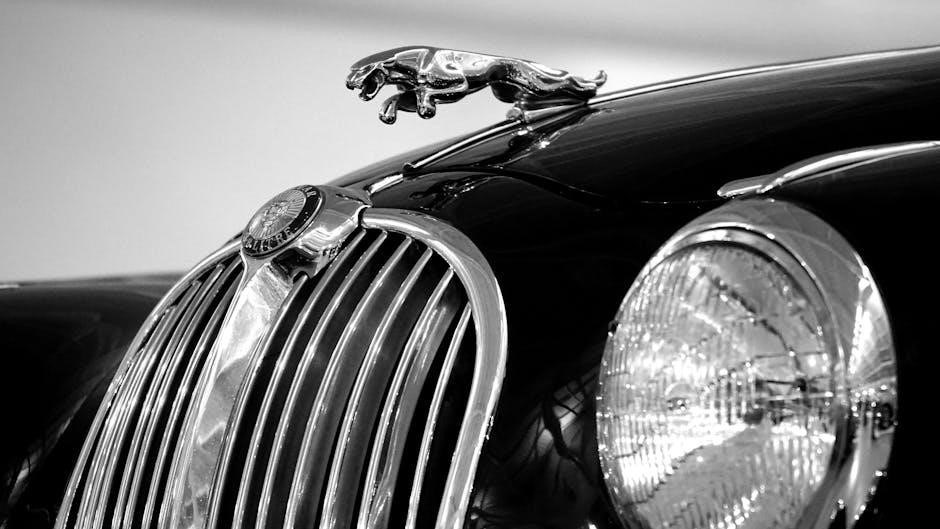
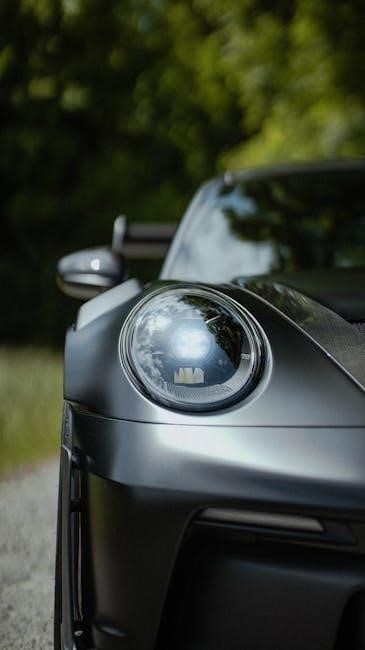
Grill accessories can elevate your grilling experience by adding convenience‚ versatility‚ and precision to your cooking. Essential accessories include a high-quality grill brush for cleaning the grates‚ long-handled tongs or spatulas for flipping food‚ and a grill fork for piercing meats. A meat thermometer ensures accurate temperature readings‚ while grill mats or liners protect the grates and make cleanup easier.
Optional accessories‚ such as a smoker box for adding wood chips‚ can infuse unique flavors into your dishes. Grill baskets are ideal for cooking delicate foods like vegetables or fish without losing them through the grates. A grill light is handy for nighttime grilling‚ while a grill cart or side table provides additional storage and workspace.
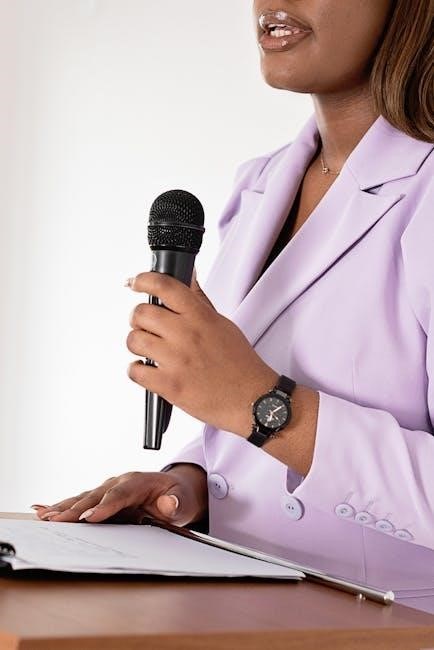
Replacement parts‚ such as burners‚ drip pans‚ and heat deflectors‚ can extend the life of your grill. Accessories like grill covers and storage cabinets help protect your grill from the elements and keep your tools organized. Investing in the right grill accessories can enhance your grilling skills and make outdoor cooking more enjoyable.
Advanced Grilling Tips
To take your grilling skills to the next level‚ consider implementing advanced techniques that enhance flavor and texture. One key method is layering flavors by using marinades‚ rubs‚ and glazes at different stages of cooking. For example‚ apply a dry rub hours before grilling‚ then finish with a sweet or tangy glaze during the last few minutes.
Another advanced technique is zones grilling‚ where you create multiple heat zones to cook different foods simultaneously. This allows you to sear meats over high heat while cooking vegetables or sauces over lower heat. Additionally‚ don’t overlook the importance of resting meat after grilling‚ as this helps retain juices and ensures even distribution of flavors.
Experiment with wood chips or chunks to infuse smoky flavors into your dishes. Hickory‚ mesquite‚ and applewood are popular choices for their distinct profiles. For a modern twist‚ try using a sous-vide water bath before grilling to achieve perfectly cooked steaks or fish. These advanced techniques will elevate your grilling game and impress even the most discerning palates.
Referencing the User Manual
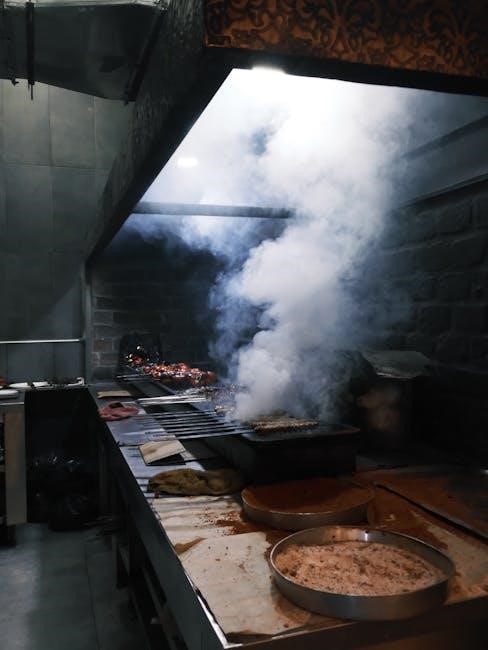
Referencing the user manual is a crucial step in mastering your grill’s operation and ensuring safe‚ efficient‚ and enjoyable grilling experiences. The manual provides detailed information about your specific grill model‚ including assembly instructions‚ safety guidelines‚ and maintenance tips. Always read through the manual carefully before using your grill for the first time to understand its unique features and operating procedures.